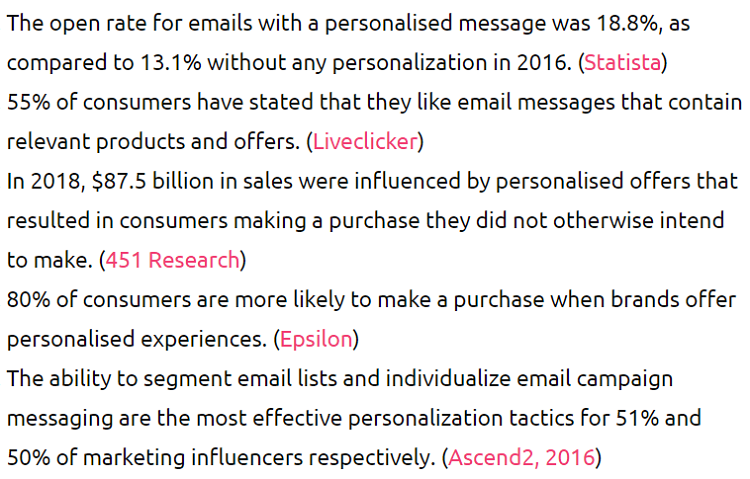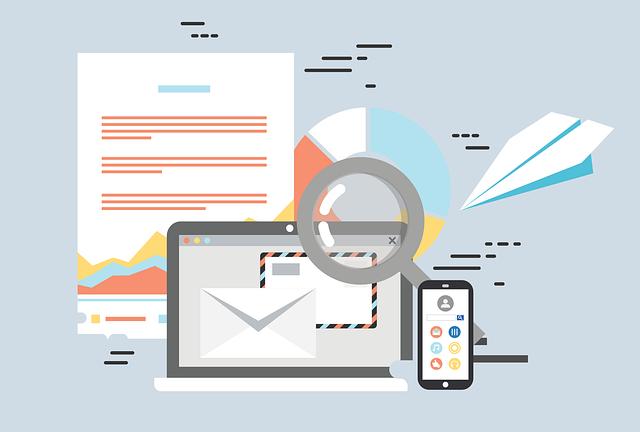Email marketing has undergone changes and its strategies go through constant optimization. Whichever the optimization level, though, something remains equally important throughout the years: emails are as effective as their copy.
Whether you create content for emails, blog posts, or WordPress landing pages, the golden rule is to make it worth reading. No matter how compelling your email visual elements are, the copy still has the first and last word.
In email marketing, everything has to do with choosing the right words. Ignore or mistreat them and it will be the key determinant for your email campaigns to fail. But before getting into details, let’s start with a definition.
What is Email Copywriting?
Email copywriting is the process of writing an email destined for an existing or potential customer. It aims to encourage certain actions on the recipient’s end, such as signing up, purchasing, participating in surveys, social media sharing, or reading a blog post.
Now that you know what exactly we’re talking about, let us provide some inspiration with eight email copywriting tips that will get your audience excited about your business proposal.
- Set your goals
What do you expect your email subscribers to do after opening your email? That’s the first question you’ll have to ask yourself when setting your email copywriting strategy. After all, how can you tell if it worked if you don’t define success first?
Adjust your email copy based on what your recipients’ next action should be. Try focusing on that key action you wish to encourage and build your email copy around that.
The best practice is to pair up each email with a single and clear goal. Cluttering your emails with multiple messages will frustrate your leads and will never serve your overall email marketing objective. And remember: not all emails have to be about selling something – starting or nurturing a relationship with your recipients is always part of the email copywriting game.
- Eye-catching subject line
Crafting the perfect email copy is meaningless if recipients don’t open your email. So, we wouldn’t exaggerate if we said that your subject line seals the fate of your email. Readers have to know beforehand that what they’re about to open is relevant and offers them a solution to a challenge they’re facing.
Think of your email subject line as one of the key factors to reaching your email objective. You must spend considerable time and effort to find the most engaging email subject line and align it with the rest of your copy. Here’s what to keep in mind when searching for the perfect one:
- Keep it short and to the point
- Leverage personalization elements
- Avoid spam trigger words
- Use actionable wording
- Stick to a single and clear action
- Know your audience
Understanding your target audience shouldn’t come as an afterthought. Before anything, get to know your recipients so that your email copy matches their lifestyles and desires. Content relevancy is crucial to outperforming your email copywriting strategy.
Gather data through website and social media traffic, along with past interaction analytics, and use them to build your buyer personas. When you have them, segment your audience into smaller groups based on preferences, buying behaviors, or demographics.
Now you know what makes them tick. All you have to do is tailor your email copy to create a personalized experience for each segment. Your prospects always appreciate the extra effort you’ve taken to process their data and address them the way they deserve. Still uncertain that it pays off? Let the statistics speak:

- Get to the point
In email copywriting, there’s one fact that overrules everything: quality beats quantity every time. If you’re trying to contact your audience through long, overwhelming emails, chances are you’re on the wrong path. Lengthy copies with praises about your product or service can be used when you write your blog posts instead.
Not getting to the point is a recipe for email subscribers skimming your content – or worse, having your emails moved to spam. Here are the pieces of information you need to share no matter what: what’s new with your business, how you can answer their pain points, and what you expect from them.
What about the email format? Make sure you keep enough white space between paragraphs and that you employ questions, bulleted lists, and short sentences to get your message across. Remember: recipients don’t need to read your entire copy; they just have to take action on it.
- Go for ‘you’ instead of ‘we’
You are already aware that email marketing isn’t about you; it’s about your audience. And when they read your email copy, they need to know it’s about THEM: their needs, their preferences, their pain points. And it’s YOUR BRAND that will magically make their life better.
“How can I do that”, you may ask. First of all, lose the ‘I’. Opt for a customer-centric approach by using the words ‘you’ and ‘your’. This subtle tactic will give your email copywriting a conversational tone and let them imagine it was drafted exclusively for them.
Leveraging second-person voice in your copy makes recipients feel honored as if they were having a one-on-one conversation with you. You may still use the words ‘we’ or ‘ours’. Just ensure you find the perfect proportion to make your potential customers feel like they’re at the center of your content marketing strategy.

- Don’t stop testing
Are you ready to dispatch your amazing campaigns? Great news! Don’t fall into the trap of resting on your laurels, though. Split testing is your greater ally in monitoring your email performance and improving your email copywriting.
A/B testing offers you the opportunity to run your campaign and experiment with its components at the same time. You can either keep or think your ideas over and proceed with different email variants to measure which one gets the best results in terms of open rates, conversions, and engagement.
No matter how efficient your email campaign proves to be, there’s always room for improvement. A/B test different elements of your email copy, like your email subject lines, preview texts, call-to-actions, and more to figure out which of them performs better. Then, you can mix and match the winning variants to make the most out of them.
- Focus on the benefits
We have already analyzed how important getting to the point is; we’ll now focus on your email benefits. Trust us when we say that when recipients open your email, they need to know right away it was worth it.
Tempting as it may be to go on and on about the compelling features of your new product, please hold back. It’s possible that your audience won’t bother reading it – they’d rather understand what your offer is and how it helps them solve their problems.
Does buying your product offer a solution? That’s what they care about, so make sure you communicate it in your email copy. That doesn’t mean you won’t mention some features, just keep it to a bare minimum and emphasize how your proposition improves their life.
If, for instance, you want to promote your WordPress themes to charity organizations, try focusing your email copy on the benefits they’ll bring to that exact audience. It goes without saying that you should stay away from industry jargon that only gets your recipients confused.
- Include a clear and strong call to action
None of the tips mentioned above makes sense if your email copy doesn’t have a clear and strong CTA. Actionable CTAs play a decisive role in leads deciding to convert. Try building your email copy around a single call to action to let them know what their next action should be.
Multiple CTAs can seriously damage your email copy effectiveness by getting readers frustrated with what you want them to do next. Maybe you think that various CTAs maximize the odds of success, but it’s actually the other way around: it results in recipients not following any of them. Or, even worse, they could get annoyed from spending valuable time without getting something in return and forget all about your brand.
Final Words
Let us summarize with this: email copywriting does matter. It did, it does, and it always will. And it isn’t about leveraging fancy words and loading your email with endless descriptions or visuals.
Use a conversational tone, focus on what you can do for your recipients, and never underestimate building customer loyalty. Last but not least, stop thinking as a marketer and step into their shoes. That type of mentality is the core of email copywriting. Just let customers participate in your fascinating brand story – and drive sales while you’re at it.

